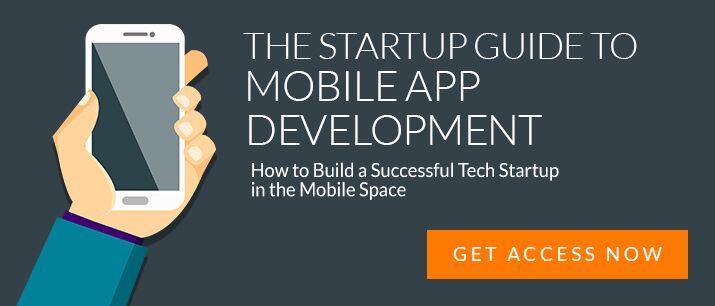6 Mobile Strategy Tips For Winning Marketers
For leading enterprises a mobile strategy is a means of building a relationship with their target audience by making it easier for them to engage with the company & its various products/services.
Keeping that at front of mind, let’s explore 10 Mobile Strategy Tips used by Winning Marketers to help you roll out your mobile strategy roadmap for 2014:
1. The world is going mobile and so should you
Mobile is the new frontier. With 25.67% of web-browsing now done on mobile devices and a growth rate of 20%+ year on year (source: StatCounter), if you’re not mopping up your piece of the pie then your competitors will.
Mobilising your business means more than just building a mobile optimised website. You also need to consider the other touchpoints your customers have with your company that may need to be mobilised:
- Social media;
- Email marketing;
- Google search;
- Online tools and applications;
- Pay-per-click ads;
- Content marketing;
- Youtube;
- etc.
Earlier in the year we published an infographic of 10 Reasons To Focus On A Mobile Strategy which encompasses important facts that every marketing manager needs to pay close attention to – click here to view.
2. A consistent user experience
There’s nothing more confusing and off putting for customers than an inconsistent experience across the many mediums of communication.
Someone who visits your mobile optimised website expects the same ‘feeling/experience’ when downloading your mobile apps, receiving your emails, engaging with you on Facebook, etc.
This doesn’t necessarily need to display the same information/offers, but your company will have certain values and beliefs that need to be reflected throughout all your marketing mediums.
Ensure the experience of your mobile marketing collateral all produce a consistent overall experience for your audience.
I recommend consulting with your design team and a user-experience specialist to ensure the experience remains consistent with your brand across all projects. This is a minimum requirement for mobile strategy best practices.
3. Plan for success
Given that mobile is still a relatively new marketing platform it’s not unusual to see marketers confused about how to deploy a successful mobile strategy. Most enterprises aim to develop an app or optimise their existing website for mobile devices.
The problem here is that ‘mobile’ is a means-to-an-end; it’s not the goal itself. The reality is that you need a smart strategy to engage your audience and hit your key objectives. Something entertaining or useful. Mobile is just the means of delivery.
A mobile optimised website or a smartphone application should act as more of a tool for facilitating ‘simplification’ of your target audiences daily activities, as opposed to a set of pages with static text and images.
Consider mobilising a particular touch-point between your business and your customers ( e.g. quote requests, mortgage calculator etc.) and create a tool that they would use on a regular basis over the next 12 months.
For example, check out the Bounce Inc case-study here for how they mobilised a key touch point for their business.
4. Advanced Mobile Data Collection
In an ever-changing mobile landscape it’s important to recognise that your customers habits are changing. And staying ahead of that bell-curve of change is of outmost importance.
In the past companies have collected data about their audience through a number of means (surveys, trade-offs, etc.) and more recently through basic information collection (web-forms). This helps them get a better grip of what customers like about their products, how they feel about their brands and other demographical information.
This year we introduced to our enterprise customers the concept of advanced mobile data collection. A hybrid between app analytics, API processing/auto-capture (Facebook login, etc.), advanced data collection forms and sophisticated funnel analytics to give you a live feed of how your users engage with your brand on the mobile medium.
Getting to know your target audience in a more personal and intimate way has never been so accessible.
5. Cover all devices – cross platform
You have heard this a hundred times before, but I’ll say it again: Cover all devices!
Start with the basics, Android (HTC, Samsung, etc.) and iOS (iPhone, iPod, iPad). This will ensure that 90% of your Australian customers are able to connect with you in the mobile space. Then tackle Blackberry and lastly Windows phone if you need to.
Secluding a large pocket like Android (64.6%) or iOS (27.6%) from your realm of influence will give your competitors a chance to pull the rug from under your feet.
6. No hard sells
Mobile is changing the way we do business. It’s no longer about getting in front of people and ramming our promotional messages down their throats – and we all know that use to work.
Today it’s about building a relationship with your customers to gain their loyalty. The big takeaway here is ‘be helpful.’
Building tools, offering great information (I’m clearly a fan of content marketing) and offering solutions to make our customers lives easier FOR FREE could double your lead generation and help you turn one lead into 100.
If you have any questions or other tips for how to deploy an incredible mobile strategy please feel free to post them below.

Latest posts by Logan Merrick (see all)
- Ep 18: Collective Campus’ CEO on Intrapreneurship and Corporate Innovation - December 20, 2016
- 50 User Engagement Strategies For Planning Memorable Mobile Experiences - December 19, 2016
- Latest Data: App Monetisation Trends And Drivers 2015-2020 - November 25, 2016



